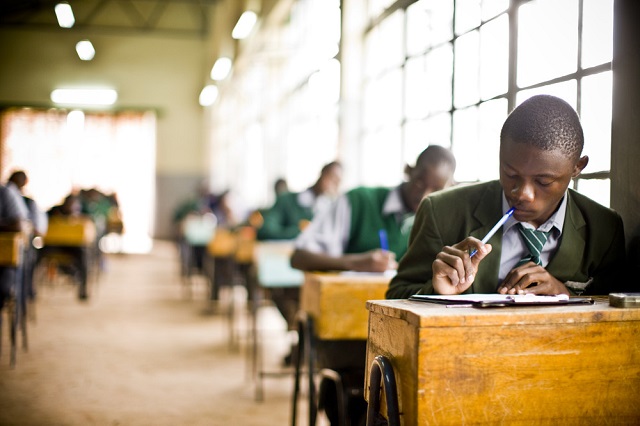Government to make sure fibre optic system covers the whole country

Patrick Chitumba, [email protected]
GOVERNMENT has, in the past seven years, built an additional 10 152km of long-haul fibre optic backbone across the country, to improve service delivery in critical areas of health, education and agriculture, buttressing the Second Republic’s commitment to ensuring that Zimbabwe has superior connectivity solutions.
The country now, has over 20 000km of optic fibre, making it possible for businesses, Government departments, and students from primary to tertiary institutions to easily access the Internet.
The Government is making efforts to ensure Zimbabwe achieves a digital economy by 2030, in line with President Mnangagwa’s Vision 2030 of an empowered upper-middle-income society.
The National Development Strategy 1 (NDS1), also emphasises that the digital economy is one of the 14 national priorities for the period 2021 to 2025.
Fibre broadband is capable of transmitting more data at faster speeds over longer distances than other technologies. As a result, it has become a foundation of modern data transmission and is increasingly used in telecom, Internet service and enterprise data centre networks.
The Second Republic has been making great strides in the use of Information Communication Technology (ICT). It has introduced various e-government services and continuously invests in the fields of ICT backbone infrastructure development, smart education, smart health, smart agriculture, research and development and capacity building and skills upgrade in ICTs, in line with Vision 2030.
On Thursday last week, President Mnangagwa launched three ICT policies namely the reviewed national ICT policy, the Smart Zimbabwe 2030 Master Plan, and the National Broadband Plan at Somabhula Secondary School in the Vungu area outside Gweru.
He also commissioned the second phase of the Fibre Optic Backbone Network, spearheaded by a foreign investor Bandwidth and Cloud Services (BCS) Group Limited in Africa.
More than US$18 million was invested in the first phase of the project, which started in Beitbridge along the railway line past Rutenga, Somabhula, Bulawayo and Hwange to Victoria Falls.
The second phase has seen the network extending from Somabhula via Gweru to Harare as well as Bulawayo-Plumtree and Harare-Mutare.
In the final phase, the fibre optic system will be installed from Rutenga to Chikwalakwala to cover the whole rail network in the country,before extending to Zambia and into the region.
This dovetails with the Second Republic’s philosophy of leaving no one and no place behind in the quest to realise an upper middle-income society by 2030, and will also feed into Africa Agenda 2063, as the project will extend to the whole continent following the existing rail network.
The 1 500km fibre optics project will not only help with local connectivity and access to internet services but also provide the NRZ with an enabler for effective signals.
BCS has been at the forefront of providing cutting-edge bandwidth and cloud services to enhance connectivity and digital infrastructure across Africa.
ICT, Postal and Courier Services Minister, Dr Tatenda Mavetera said the Second Republic has done extremely well in terms of ICTs by making sure that the fibre optic coverage is increased across the country.
“The Second Republic is making sure that the groundwork for providing affordable Internet access in Zimbabwe is established and the critical piece of infrastructure in that area is the fibre network,” she said.
“We now have over 20 000km of fibre, but from 2017 up to now, the Second Republic under the leadership of President Mnangagwa has managed to add 10 152km of fibre. This makes it possible for children to access the Internet at fast speed, even in schools for easy learning.”
Dr Mavetera said under the Second Republic, there are now 202 community information centres.
“This means that every district has a community information centre. Over 150 000 people have been trained with digital skills, and the likes of Young Women in Business are training others in digital skills,” she said.
“President Mnangagwa has also managed to make sure we have 1 320 health centres that have been connected through the e-health programme. A total of 173 are to be connected and will be launched towards the e-health programme in a few weeks.”
Dr Mavetera said over 14 239 computers have been donated in schools, which has made it easy for the pupils to access ICTs while 719 school laboratories have been set up across the country.
“President Mnangagwa has identified ICT as a key to the attainment of Vision 2030, under the infrastructure, utilities and digital economy pillar of the country. The optic fibre network is poised to connect communities, businesses, and government entities within a seamless digital ecosystem,” she said.
“It is set to revolutionise Internet connectivity in Zimbabwe, offering tangible benefits to local Internet users by enhancing speed, reliability, and accessibility.”
Dr Mavetera said the Smart Zimbabwe Master Plan has also been formulated, as a strategy for the country to achieve a digital economy by 2030.
The minister said under the infrastructure, utilities and digital economy pillar of the NDS1, ICTs are recognised as key enablers of economic development.
She said their integration across all national development strategies is crucial to achieving universal access by 2030.
Dr Mavetera said the Zimbabwe National Broadband Plan envisions a highly connected information society, powered by universal and reliable broadband networks, services and applications by 2030.








Comments